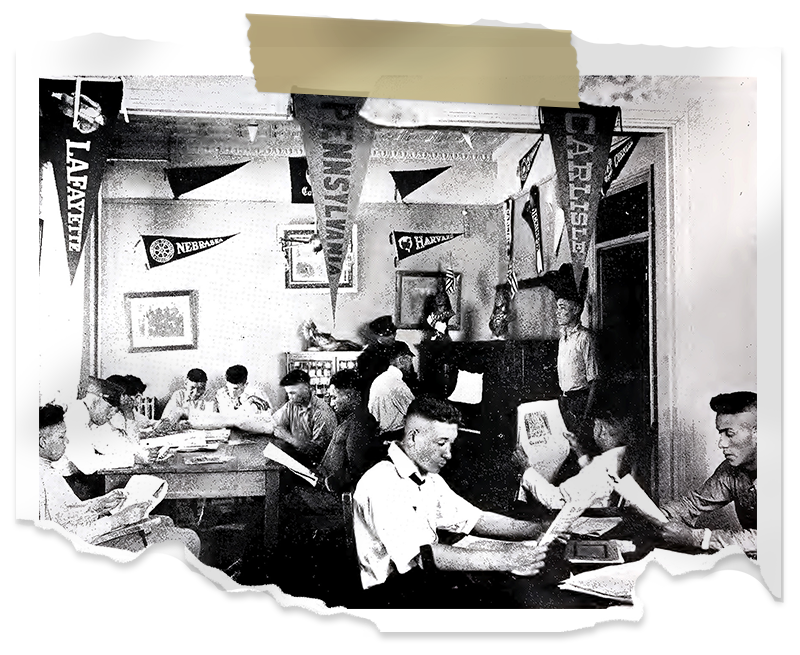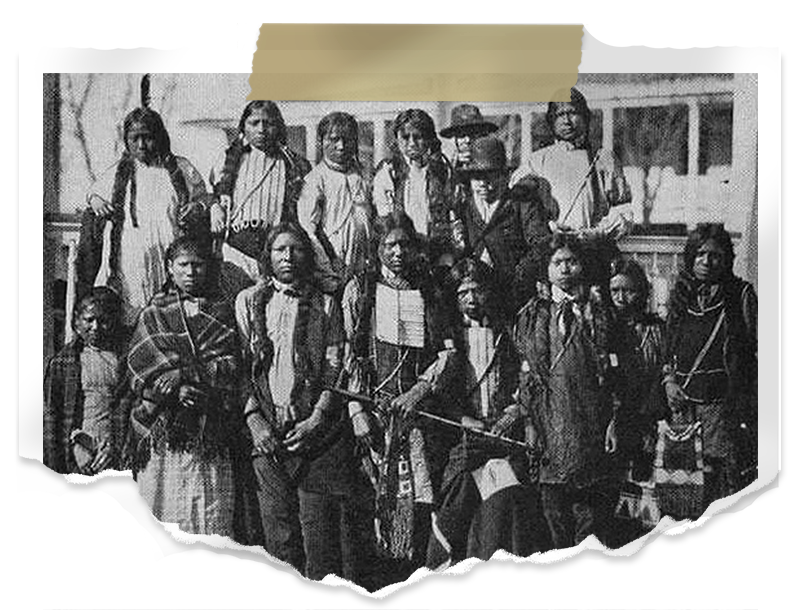Past
Opened in 1879 in Pennsylvania, the Carlisle Indian Industrial School was the first government-run boarding school for Native Americans. Civil War veteran Lt. Col. Richard Henry Pratt spearheaded the effort to create an off-reservation boarding school with the goal of forced assimilation. The Army transferred Carlisle Barracks, a military post not in regular use, to the Bureau of Indian Affairs for use as a boarding school.
Students were forced to cut their hair, change their names, stop speaking their Native languages, convert to Christianity, and endure harsh discipline including corporal punishment and solitary confinement. This approach was ultimately used by hundreds of other Native American boarding schools, some operated by the government and many more operated by churches.
Pratt, like many others at that time, believed that the only hope for Native American survival was to shed all native culture and customs and assimilate fully into white American culture. His common refrain was “Kill the Indian, Save the Man.”
Yet initial student recruitment for the school was also about control of the tribes. The Department of War directed Pratt to travel to the Dakota Territory and recruit the first students from the Oglala Sioux and Brule Sioux. Government leaders essentially held hostage the children of tribal leaders to try to ensure good behavior of the tribes.
The school was presented to the tribes as an opportunity for children to learn English and be better able to protect the tribe’s interests in the future. Many parents and tribal leaders initially embraced the opportunity for their children to learn, while others remained skeptical of any efforts by the U.S. government.
Complex History
The complex history of Carlisle is both tragic and uplifting. While Pratt and his supporters believed they were helping the students, the boarding school experience stripped them of their customs, culture, and heritage. Disease and harsh conditions took their toll, and hundreds of children died. Many were returned to their families, but 186 children are still buried on the site today.
But along with that trauma and tragedy, Carlisle gave students an opportunity to explore the world outside of the reservations they called home. The school fielded many highly regarded athletic teams, including baseball and football teams with sports icon Jim Thorpe. The internationally acclaimed Carlisle band performed at the inauguration of President Theodore Roosevelt and every other inauguration held during its 39 years of operation. From the ranks of Carlisle alumni rose many noted activists and advocates who championed the cause of cultural preservation.
Athletic Legacy
Sports and other social clubs were encouraged at Carlisle, and the school went on to create an athletic legacy, particularly in football. The first football team played in 1882, but the sport was banned in 1890 due to the number of student injuries. In 1891, a group of 12 students pleaded for the team to be allowed to play, and the request was granted. In 1899, Glenn “Pop” Warner became the Carlisle football coach tasked with leading the team to victory.
Warner created trick plays to utilize the smaller size and speed of the Native players. As the team ran these unique plays, it helped create the rule book for modern American football that ultimately made many of the plays illegal. As the game changed, Carlisle continued to innovate, and in 1912 they led the nation in total offense, yards, touchdowns, and points with team captain Jim Thorpe and future hall-of-famers Joe Guyon and Gus Welch.
The closing of Carlisle
As time went on, more local schools opened across the United States to educate Native Americans, which meant fewer students needed to travel east to Pennsylvania to attend Carlisle. A Congressional investigation surrounding the management of the school in 1914 resulted in declining attendance and morale. When World War I began in 1917, enrollment further declined.
On September 1, 1918, the school was officially closed, and the buildings were transferred back to the U.S. Army to serve as a rehabilitation hospital for soldiers wounded in the war. Today, the site is home to the U.S. Army War College.
Carlisle by the Numbers

39 years of operation

186 graves of children who died while attending

140+ tribes

Hundreds of boarding schools, both private and government-run, were modeled after Carlisle.

Thousands of Students
…While the white people had much to teach us, we had much to teach them.
-Luther Standing Bear (Ota Kte)
Support
We want to honor the legacy of the children who attended Carlisle by building a heritage center and museum near the original school site. You can support this vision by donating, by contacting us to arrange a visit, or by sharing our website or social media. Every donation and every piece of information you share helps educate the public and keep these stories alive.
